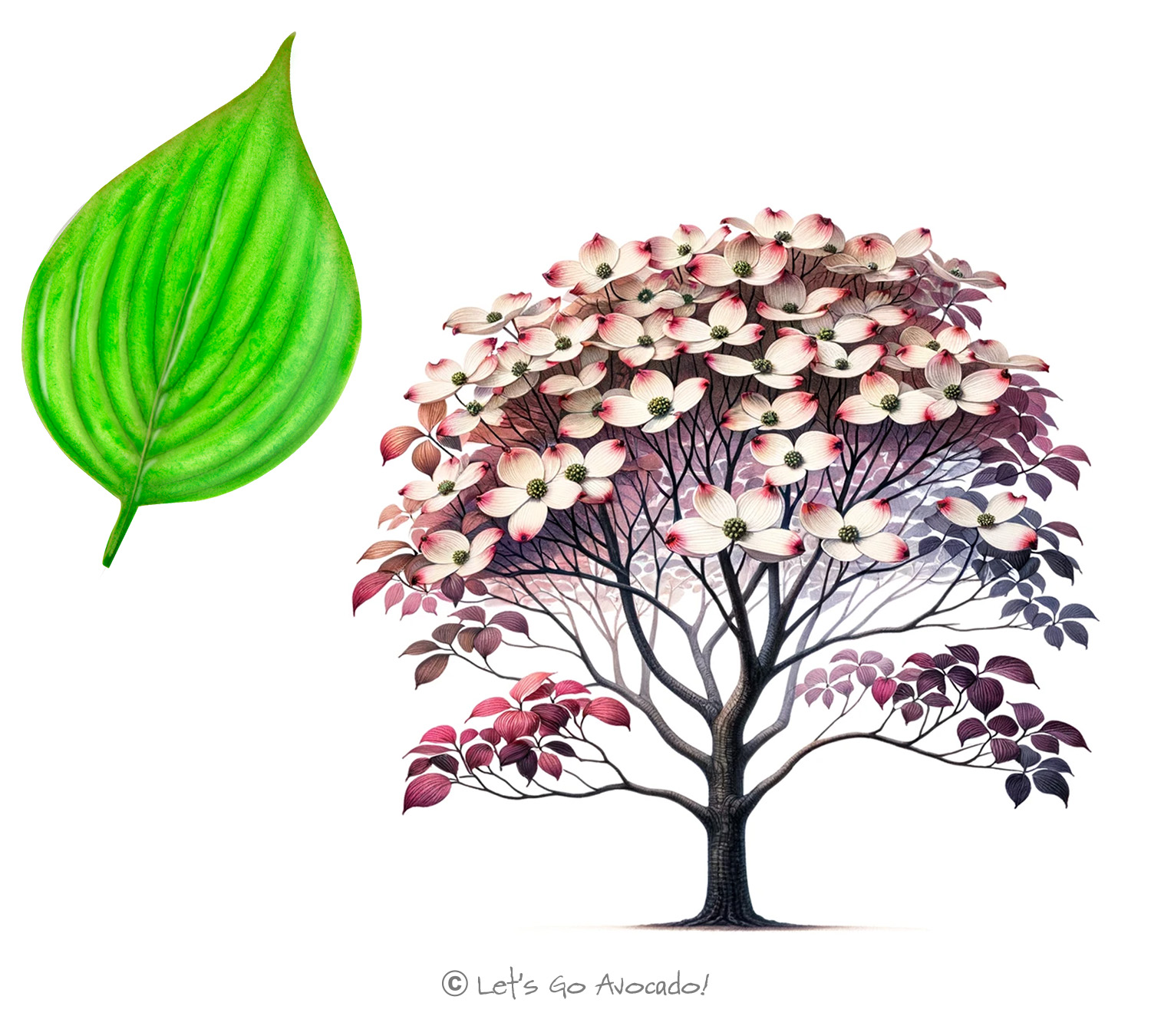The Dogwood Tree: A Dazzling Contributor to Forests and Gardens
Embark on an exciting exploration into the world of the Dogwood tree, botanically known as Cornus species. This tree isn’t just a pretty sight in spring; it plays a pivotal role in its ecosystem. Native to various parts of the world, including North America, Asia, and Europe, Dogwoods are renowned for their beautiful blossoms and distinctive appearance. These trees bring more than just aesthetic value; they contribute significantly to their environments. Let’s delve into the fascinating world of the Dogwood and discover the wonders it holds.
Characteristics of the Dogwood
Spotting a Dogwood tree is a visual treat. Its most striking feature is its flowers, which are actually modified leaves called bracts. These bracts are typically white or pink and surround the tree’s small, true flowers. The leaves of the Dogwood are simple and oval, turning to vibrant reds and purples in the fall. The bark of mature trees adds texture and interest with a pattern resembling a jigsaw puzzle.
Size and Structure: A Versatile Presence
Dogwoods are usually medium-sized trees, reaching about 15-30 feet (4.5-9 meters) in height. They have a broad, spreading form, making them an excellent choice for both woodland settings and ornamental garden use. Their manageable size and striking spring and fall colors make them favorites for landscaping.
Growth and Lifecycle: Adapting Across Seasons
The Dogwood tree has an intriguing lifecycle. Its famous bracts and flowers emerge in spring, providing a feast for pollinators. In the fall, the tree produces berries, which are a crucial food source for birds. Dogwoods prefer well-drained soils and can adapt to various light conditions, although they flourish best with some shade.
Ecological Role: More Than Just Beauty
In their natural habitat, Dogwood trees are more than just ornamental plants. They provide shelter and nesting sites for birds and their fruits support various wildlife species. The tree’s ability to thrive in forest understoreys makes it an important part of the woodland ecosystem.
Resilience and Challenges
Despite its delicate appearance, the Dogwood tree is relatively resilient. It can face challenges from diseases like Dogwood anthracnose and pests, but its versatility in various landscapes speaks to its adaptability and enduring presence.
The Dogwood in Human Lives
The Dogwood tree holds a special place in human culture and landscaping. Its wood, known for its toughness, has been used for making tools, and the tree’s ornamental value has made it a staple in gardens and parks. The Dogwood also holds cultural significance in many regions, often featuring in folklore and art.
The Dogwood tree, with its stunning flowers and ecological benefits, is a remarkable feature of forests and gardens. As we walk through blooming Dogwoods or spot them in our neighborhoods, let’s appreciate their role in beautifying our surroundings and supporting local wildlife. Each Dogwood tree adds a touch of elegance to the landscape, playing its part in the natural cycle of life and offering shelter and sustenance to various creatures.
As young explorers, remember that every tree has a unique role in nature. Keep exploring, and you’ll continue to uncover the incredible stories and roles of trees in our world.










